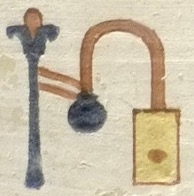Resources for Online Teaching (from the SBL)
General Considerations
Your university will likely have resources and staff expertise to help you transition to a virtual classroom. Be sure to take advantage of them.
Pivoting to Online Instruction
Jessica Tinklenberg
Tips for Teaching Online
Amy Hale and the AAR Teaching and Learning Committee
Bringing Your Course Online
Modern Language Association
Teaching in the Context of COVID-19
Jacqueline Wernimont and Cathy N. Davidson
How to Be Present Online amid COVID-19
J. David Star
Moving Online Now: How to Keep Teaching during Coronavirus (downloadable guide)
The Chronicle of Higher Education
Some Resources for Online Learning from the Wabash Center Resource Collection
The Wabash Center for Teaching and Learning in Theology and Religion
Massive Open Online Courses (MOOCs)
These are some online courses brought to our attention by members. Staff have not reviewed the courses in their entirety. Viewer discretion is advised. If you offer an online course that might benefit other members, please email us at sblpress@sbl-site.org.
The Bible in Light of the Ancient Near East
Nili Samet
Introduction to New Testament
Christine Hayes
Virtual Tours
The Ultimate Guide to Virtual Museum Resources
Virtual World Project
Ancient Near East and Biblical Studies Online ResourcesOnline Resources for Studying and Teaching the Ancient WorldSBL Online Teaching Weekly Newsletters
Lynn Huber
New Testament Gateway
Mark Goodacre
16 March Newsletter
*Recognizing the increased need for online resources, SBL staff has chosen these external resources because we feel they may be useful for those who teach the Bible. The Society is committed to providing as many resources as we are able, and staff make every effort to vet external resources, but please be aware that the nature and availability of these resources change on a daily basis. Inclusion on the SBL site does not constitute or imply an endorsement, recommendation, warranty, or favoring of products or services by the Society or constitute or imply an exclusive arrangement with the Society. The views and opinions of external resources do not necessarily reflect the views or opinions of the Society. The Society neither controls nor endorses the content of external sites or the product promoted therein.









































































































































